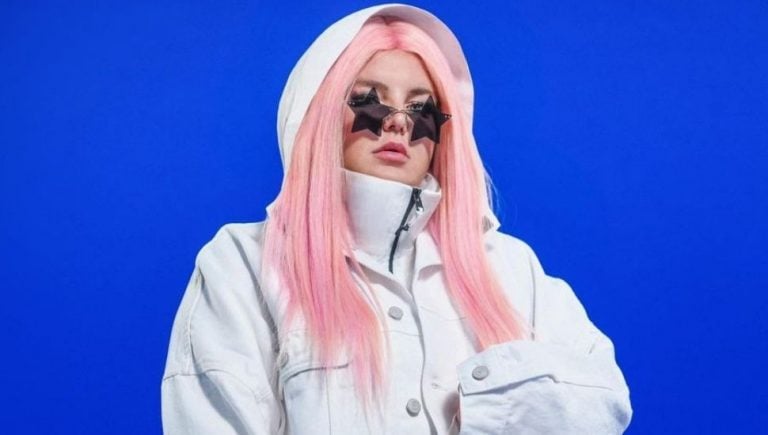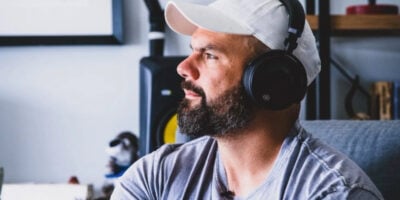Tones and I takes to her Instagram Story to call out homeless people who were squatting in one of her Byron Bay homes.
Tones and I recently took to Instagram to express disdain for a group of people squatting in one of her Byron Bay homes, an area with a growing homelessness crisis.
When Tones came back to her Byron home and discovered four people (two couples) had been living there for a week, she took to her Instagram story to describe them as “wacked out” and “erratic” people. She said the group had a variety of belongings there including clothing, needles, plants (likely marijuana), spare TVs, and various bits of garbage. Tones then said they threw all of their stuff on the lawn with a sign that read, “The police are coming, fuck off!”
In her next story, she showed the sign, and what it read was slightly different, “POLICE HAVE BEEN CALLED!! House being watched!! take your shit and go back to Sydney! we know all the stuff you have stolen.”
Byron Bay is a city that has seen a rise in homelessness over the past couple of years due to a multitude of factors. Property prices in Byron have increased by +34.8% over the last year and +112% over the last five years.
The increase has caused the average price of the typical Australian home- a single-story house with two bedrooms- to jump to 1.5 million euros, with an average rent of 800 euros per week. This is more than Sydney’s Coogee district, one of the city’s most famous beaches.
The mayor of Byron Bay, Michael Lyon, recently talked about how working remotely added to the crisis, decreasing the number of available accommodations and increasing prices. Working remotely added to the wave of Airbnb rentals opening in the area, creating a snowball effect that forced many onto the streets.
Love Music?
Get your daily dose of metal, rock, indie, pop, and everything else in between.
Lyon commented on the situation, “We are a tourist destination, so 10% of our housing has always been dedicated to vacation rentals, which offer much better returns than long-term rentals. But the trend has definitely accelerated with the emergence of platforms like Airbnb. Today, 40% of all accommodations in Byron Bay are rented on such sites. As a result, the number of available accommodations has decreased significantly, which has led to a significant increase in rents.”
One Byron Bay resident, Fintan Callaghan, gave an account of his experience of being treated as less than a piece of property, “I was living with two of my daughters in a converted garage that I rented for about 250 euros a week. Then my landlord decided to turn it into a yoga studio. I don’t blame him, he gave me more than three months’ notice [the legal notice period in Australia is one month]. But it came at the worst possible time,” he recalls.
Fintan’s charitability towards his landlord’s cruelty was not rewarded, as he ended up being separated from his daughters and homeless at the end of his eviction notice. He was forced to leave his children with family members, while he spent roughly three months sleeping in homeless shelters more than an hour away from his hometown, as Byron is notably devoid of such accommodations.
Byron does, however, have a “Homeless Hub” which makes certain amenities available to the homeless.
“It was very important to us that this place would look like any other café in town, so that the people who come here feel good, dignified, but also so that they can make connections,” explains Ariana, one of the volunteers. She also explained that many of those who frequent the service have seen a change in profile after recent floods ravaged the area, “We now have families who come with their children, but also people who work but who can no longer afford to live,” she says.
Relating back to Fabian, the father of two said he has been sleeping in a tent for four months in the middle of the dunes near Byron and is considering moving back to Melbourne due to the harsh condition, “I had to stop working: I’m tired because I don’t sleep well and I’m cold all the time. It’s the last straw for me, as a roofer, not to have a roof over my head.”
Byron Bay has an estimated residential population of 6,342 as of 2021, 200 of which are homeless. Many of these people live in a similar fashion to Fabian: residing in a tent, in the open weather with maybe a bush as cover, or in a car if available. In comparison, Sydney, with a population of over 5 million, has a homeless population of 272 people.
Congruent to this crisis are celebs living in massive million-dollar mansions, who come to the area for its beaches and accommodations. This leads us back to Tones and I, who bought two homes in Byron Bay in December of 2020, directly in the midst of the same housing crisis that created hundreds of situations such as Fabian’s.
Her handling of the situation is a bit ironic, as Tones and I, whose legal name is Toni Watson, started out as a busker on the streets of Byron Bay while living and sleeping in her van. She’s never committed a crime, but those who come from brutal conditions aren’t exactly exempt from showing disdain to people living in those very same conditions once they are able to move up in class.

































